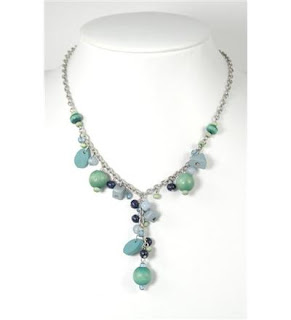Costume jewellery can be traced as far back as the 1700's, when the rich had their fine jewellery duplicated using either glass stones or paste, and this would have been done for several reasons.
During the growth of the middle classes during the mid 1800's there was various different types of jewellery being produced, using fine semi - precious materials, although fine jewellery was still being produced using fine gems such as emeralds, sapphires, diamonds and gold.
A more affordable type of jewellery called "rolled gold" entered the market place for the middle classes.
Rolled gold was a thin layer of gold attached to a base metal set with semi - precious stones such as amethyst, coral or pearls.
There was also jewellery everyone could afford, which looked like gold and used glass stones. All these types of jewellery were intended to be passed down from generation to generation.
fashion jewellery is designed to reflect the style, colour and stones for that period, ie 1910 - 1930 silver was a popular colour for the metal and therefore jewellery designs could be found in platinum, white gold, silver or silver coloured base metal.
Gold although in short supply, became popular again by world war two.
However the gold that was available was made into very thin sheets and bonded to silver, this was called vermeil then made into jewellery.
Jewellery in a sense hasn't changed much we still have fine jewellery, semi - precious jewellery, fashion jewellery and costume jewellery available.
Jewellery, whether its fine jewellery or costume jewellery can just add that finishing touch to your outfit.
Many jewellery styles of the past are being reproduced and are very fashionable.
Fashion jewellery and costume jewellery can be fun to wear, it is in style fashionable and a statement piece such as a necklace, bracelet or ring can be a wonderful conversation starter.




